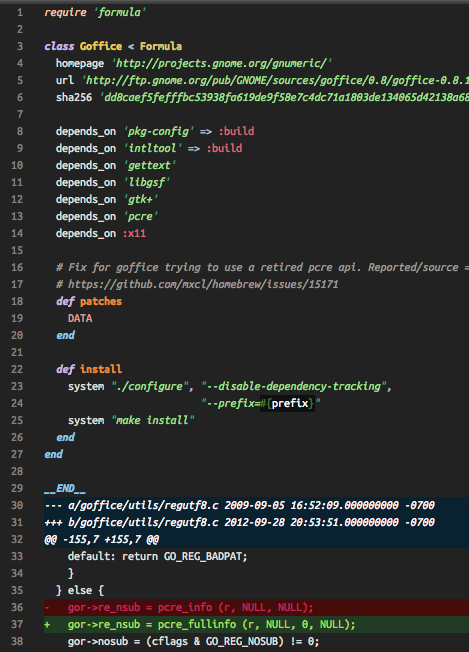

You can find applications which were installed manually,īut can be managed by Cask under “Apps not installed by Cask, but installed in…”. # Apps not registered in Cask, but installed in ~/Applications. # Apps not registered in Cask, but installed in /Applications/Utilities: # /Applications/App Store.app # /Applications/Calendar.app #cask install copy.rb # ~/Applications/Copy.app # Apps not registered in Cask, but installed in /Applications.

Web site content distribution services provided by CloudFlare. Once installed, run this command from Terminal.app to install the latest X11 server on your system: brew install -cask xquartz Web site based on a design by Kyle J. Visit Homebrew to install it on your system. # If you want to install them with Cask, remove comments. Alternatively, it is possible to install XQuartz with Homebrew. # Apps not installed by Cask, but installed in ~/Applications. #cask install keyremap4macbook # /Applications/KeyRemap4MacBook.app # Apps not installed by Cask, but installed in /Applications/Utilities: # If you want to install them with Cask, remove comments. # If you want to install them with Cask, remove comments. #tap homebrew/cask #install brew-cask # Apps installed by Cask in /ApplicationsĬask install adobe-reader # /Applications/Adobe Reader.appĬask install xtrafinder # /Applications/XtraFinder.app # Apps installed by Cask in /Applications/Utilities:Ĭask install xquartz # /Applications/Utilities/XQuartz.app # Apps installed by Cask in ~/Applications.Ĭask install bettertouchtool.rb # ~/Applications/BetterTouchTool.app # Apps not installed by Cask, but installed in /Applications. # tap and install Cask (remove comment if necessary). # Cask applications # Please copy these lines to your Brewfile and use with `brew bundle`. Inaddition, $PLATFORM, which is platform identifier like You can use some shell variables: $HOSTNAME, $HOSTTYPE and $OSTYPE. Though it should be no more than once in one Brewfile.įor the path, such ~ is translated into $HOME. The relative path starts from the parent file’s directory. Then the start directory is the directory The path can be an absolute or a relative. Then corresponding argument is used as an external file. If the top Brewfile has main, file or brewfile commands, If you want to divide the list into several files. If you use tapall, Brew-file does brew install for all Formulae in the repository If you use tap, Brew-file only does tap the repository. If you want to build macvim with lua option, you can write as above example Brewfile. brew install package is same as brew package. If the second column is install, it will be ignored. You can use environmental variables such file ~/$.Brewfile.Įxecute X at the beginning of the install.Įxecute the line (first and other columns as one line) before after is executed. A path is a absolute path, or a relative path, relative to the file which calls it. If it exists, new packages will be written to the main file instead of the top file.Īdditional files. For such a case, only App names are listed by init, and install command just warns like Please install from App Store!. (It will be installed automatically.) For older OS X, it might be not available. Commandīrew tap X, and installs all packages of Formulae in the tap.Īpps installed from AppStore. Therefore any options of Homebrew can be used. They are used as arguments for such brew install, Second to the last columns are package name and options. pkg, follow the instructions.# This will install all packages in rcmdnkpac Go to: and install the most recent version of XQuartz. # I'm pretty sure there was another argument that had to be passed for it to work properly.īrew install python3 -with-brewed-tk -with-brewed-opensslīrew install sdl sdl_ttf sdl_image sdl_mixer portmidi # installed on OS X, but I may be forgetting something. # I am *fairly* certain that these are all the steps I took to get Python3 and Pygame


 0 kommentar(er)
0 kommentar(er)
